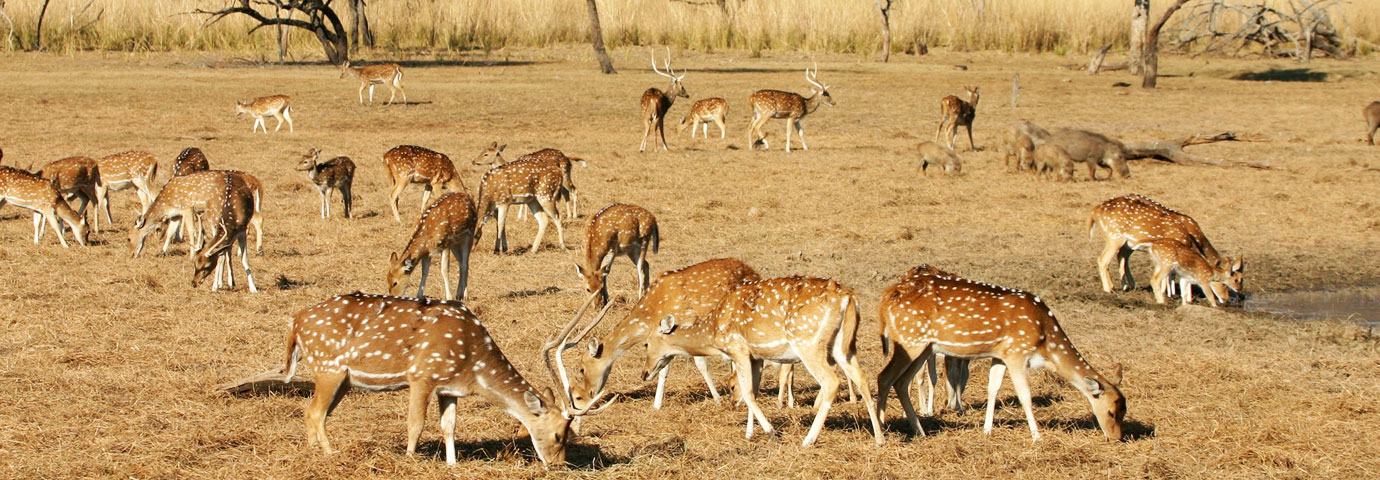Tourists Attractions
Rajasthan is a pristine platform for viewing wildlife in the country because of its two national parks and over a dozen sanctuaries. Sariska National Park is known for its tigers. According to the latest available data, there are about 35 tigers at Sariska. Other predators of the forest include the panther, jungle cat, jackal, hyena, and fox. Also found are sambhar, chital, wild boar, hare, nilgai, civet, four-horned antelope, gaur (Indian bison) and porcupine. Birds found here include peafowl, gray partridges, quails, sand grouses, tree pies, white-breasted kingfishers, golden-backed woodpeckers, crested serpent eagles, vultures and horned owls. Since the last decade, caracals have also been spotted here.
The landscape of Sariska comprises of hills and narrow valleys of the Aravali hill range. The topography of Sariska supports scrub-thorn arid forests, dry deciduous forests, rocks and grasses. The broad range of wildlife here is a wonderful example of ecological adoption and tolerance, for the climate here is variable as well as erratic, especially in terms of rainfall, which is desperately needed to replenish the region.
Apart from wildlife, there is touch of historicity as well. Located inside the park are ruins of medieval temples of the Hindu God Shiva. The ruins of the temple Garh-Rajor, built in the 10th century, are scattered all over the jungle. A 17th-century castle on a sharp hilltop at Kanakwari provides an excellent view of Sariska's avian inhabitants in full flight. It is in this fort that.
Mughal emperor Aurangzeb once imprisoned his very own brother, Dara Shikoh. There is also a palace built by the erstwhile Maharajas of Alwar that has now been converted into a hotel.
The park's wild inhabitants may be spotted at the many water holes of the park. However, if the region has kindled the wild spirit in you or if you are determined not to leave without some good wildlife photographs, then booking a `hide' is an excellent option. These spots overlook the various water holes of Sariska, which the animals frequent.


